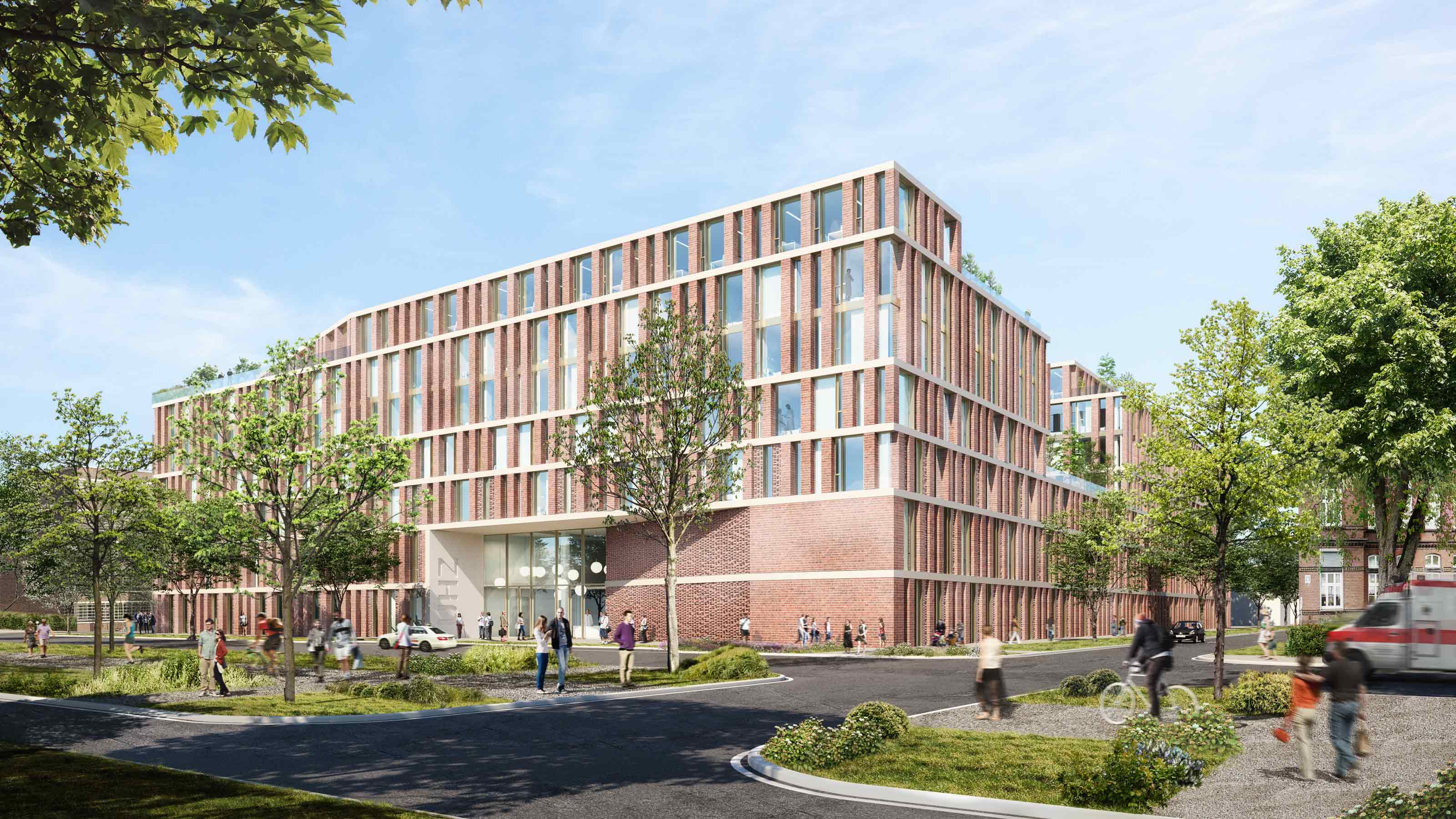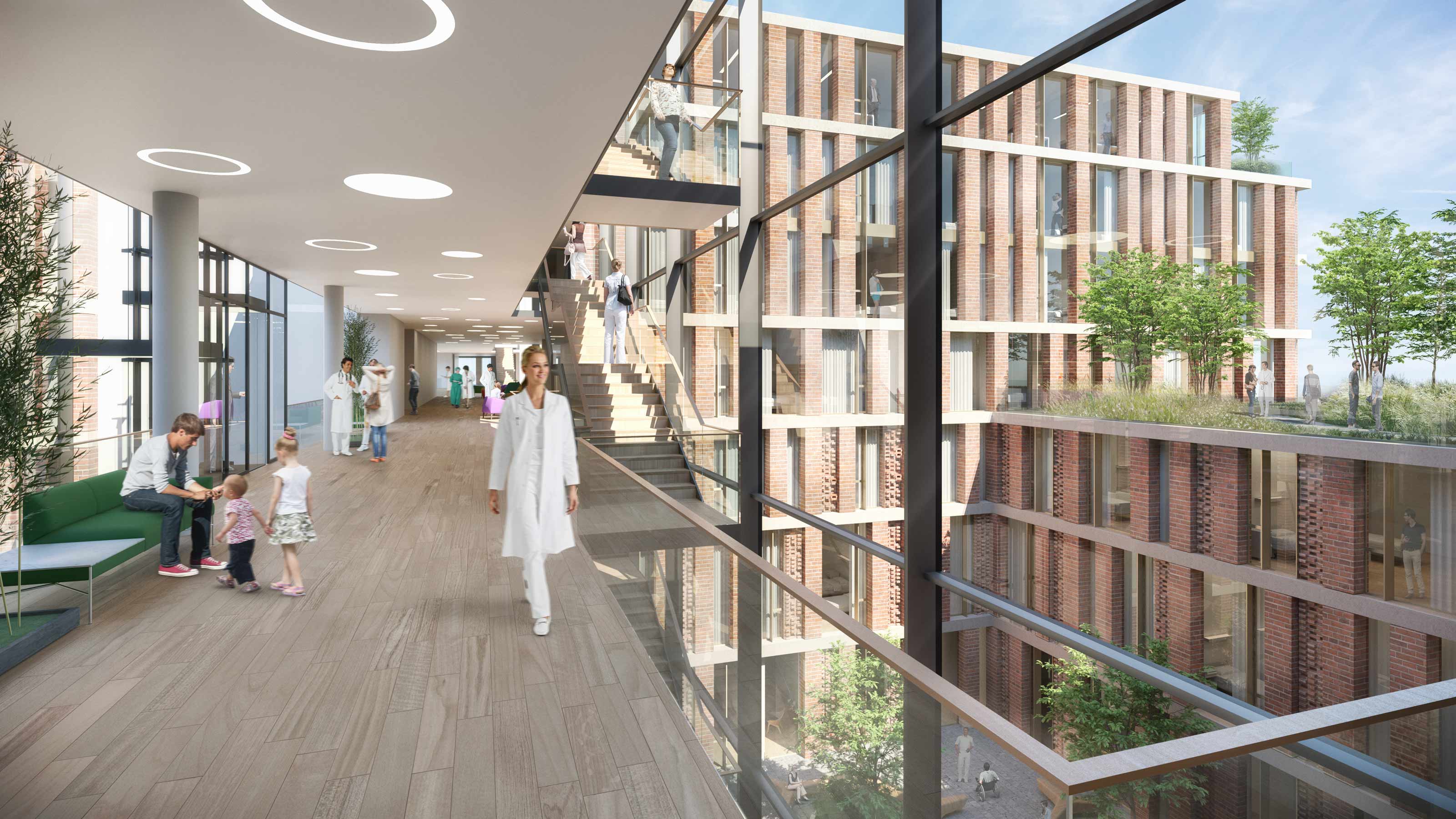New building for University Heart Center Hamburg
A healthy and pleasant environment that stimulates and optimizes medical care, research, education and innovation.
Almost no other building is as complex as an academic hospital. An optimal organization of care processes is just as important as the needs of patients and care professionals. Human scale, a sense of safety and security, good orientation, clear communication and privacy are all essential. It should offer a healing environment that actively contributes to the well-being and recuperation of patients.
UHZ: modern and prestigious
A university hospital must offer ideal working conditions for its users. It must offer a healthy and pleasant environment that stimulates and optimizes medical care, research, education and innovation. The plan for the new University Heart Centre at the UKE in Hamburg, designed by EGM in collaboration with the German architecture firm GMP Architekten, combines all these aspects. It represents a new generation of academic hospitals and positions the centre as a modern and prestigious clinic.
Clear and pleasant organization with central axis, patios and roof gardens
The building has an S-shaped basic structure that allows each volume to profit from the views of the surroundings. A central axis organizes the hospital in a natural and simple way, ensuring orientation and clarity on all floors, with open spaces and generously dimensioned stairs. Four patios and two roof gardens on the third floor create pleasant green outdoor spaces where patients and staff can escape from the bustle of the hospital.
Facade offers balance between privacy, daylight and views
The differentiated volume and facade blend seamlessly with the surroundings. The distinctive Hamburg brickwork architecture of the neighbouring is continued, but interpreted in a modern way. The facade is composed of vertical elements of red brick, which are interrupted on the first floor by horizontal strips of coloured prefab concrete.
The facade is partly blank and partly open on the lower floors, where the operation theatres, intensive care and cardiac catheterization rooms are located. That creates a good balance between the privacy required in the intensive care units and the admission of daylight and views on these floors. Generously sized window openings in the nursing departments on the upper floors offer even more spectacular views of the green surroundings and the vibrant campus.
Strong focus on sustainability
Sustainability is a key pillar of the design in terms of energy consumption, use of materials and flexibility/adaptability. The open character optimizes daylight admission, and the compactness of the building makes it very energy efficient. The generic structural grid allows for future internal changes to be easily made. The building can expand horizontally towards to east by extending the central axis.
Minimizing energy needs
The total energy needs are minimized throughout the year by the creation of an optimal interior climate. For example, comfort in the patient rooms is improved by individually adjustable ventilation. Automatic control by sensors regulates the position of the openable windows, guaranteeing a pleasant climate at all times. Moreover, this instrument allows for efficient and controllable night-time cooling in the summer. Central and individually adjustable solar shading prevents excess heating in the summer. Moreover, blinds can be activated on the room side. This ensures optimal protection against solar heat gain, plenty of daylight and high user friendliness, with the patient in control of his environment.


